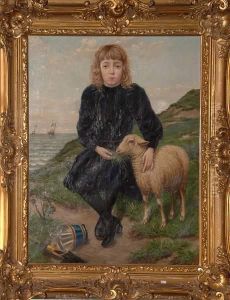Jan Baptist Lesaffre Paintings
Jan Baptist Lesaffre was a Flemish painter who worked during the Baroque era, mainly known for his contributions to the Rococo movement, which developed towards the end of his career. Born in 1687 in the city of Antwerp, which was then part of the Spanish Netherlands, he became part of a rich tradition of Flemish art, a heritage that included such luminaries as Peter Paul Rubens, Anthony van Dyck, and Jacob Jordaens.
Lesaffre's work reflects the transition from the grand, dramatic style of the High Baroque to the lighter and more playful Rococo aesthetic. His paintings typically feature delicate brushwork, a lighter palette, and a gentler approach to subject matter compared to the earlier Baroque grandeur. He was skilled in creating religious paintings, portraits, and genre scenes, which were quite popular in the domestic settings of the time.
Although not as widely known as some of his contemporaries, Lesaffre contributed to the development of Flemish art by embracing the Rococo style's growing popularity. His works were characterized by an elegance and charm that were in vogue during the early 18th century. He was part of the Guild of Saint Luke, an association of artists in Antwerp, where he took on students and apprentices, thus ensuring the transmission of his artistic techniques and styles.
Lesaffre's career was relatively short, as he died in 1729 at the age of 42. The exact circumstances of his death remain unclear, but his legacy continued through his influence on other artists and his contributions to the evolving styles of the period. Unfortunately, due to the limited documentation and the overshadowing fame of other artists from his homeland, Lesaffre's works are not as well-documented or studied as those of some of his peers. Nevertheless, his art remains a testament to the dynamic and transitional period in Flemish art from the Baroque to the Rococo.
